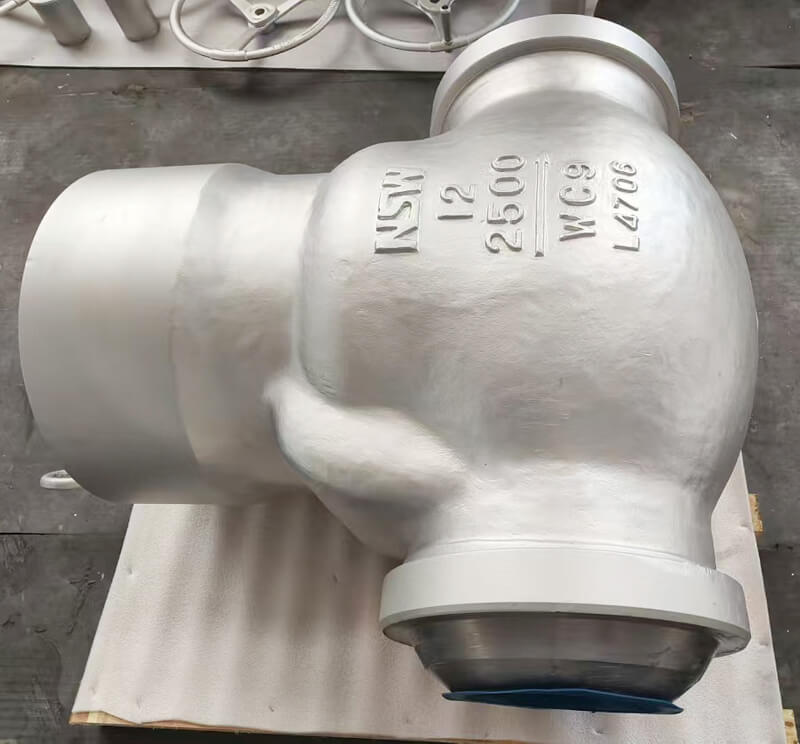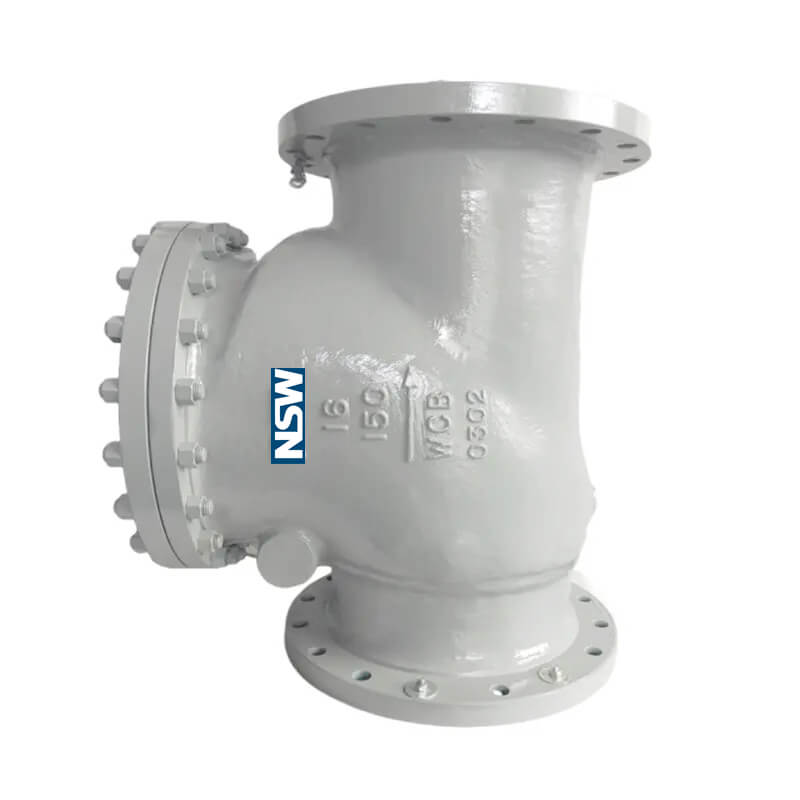Check Valve Overview
A check valve is an automatic valve that uses fluid pressure and disc weight to prevent reverse flow. Also known as a non-return, one-way, reflux, or isolation valve, its core function is ensuring unidirectional flow to protect piping systems from backflow damage.

How Check Valves Work
Forward flow: Fluid pressure lifts the disc, allowing passage.
Reverse flow: Disc closes via gravity/fluid pressure, blocking media.
Key Components of Check Valves
Essential parts include:
Valve Body: Outer casing connecting pipelines
Disc: Mobile component enabling flow control
Seat: Forms sealing surface with disc
Spring: Forces disc closure (in spring-assisted types)
Check Valve Symbol in PID Diagram
Understanding the Check Valve Symbol
1. Circle: Represents the valve body.
2. Arrow or Diagonal Line: Indicates the direction of flow. This is crucial for installation, as it ensures that the valve is placed correctly within the system.
3. Additional Notations: Sometimes, additional notations or labels may accompany the symbol to provide further information, such as the valve size, material, or pressure rating.

Check Valve Design Standards
Compliance covers national, industrial, and international standards for materials, construction, performance, and installation:
International Standards
API 594: Covers wafer/lug check valves for oil/gas pipelines
ASME B16.34: Design specs for flanged/welded valves
API 6D: Pipeline valves (ball/check/gate valves) for petroleum industries
Chinese National Standards
GB/T12233-2006: Iron lift check valves (≤PN40)
GB/T13932-1992: Iron swing check valves (DN50-DN1800, water/steam)
GB/T12235-2007: Steel check valves for high-T/P petroleum systems
Specialized Valve Standards
CJ/T282-2008: Butterfly slow-close check valves (pump outlets)
GB/T21387-2008: Axial flow check valves (low-flow resistance)
Selection & Design Requirements
Sizing: Swing type for ≤350mm; butterfly for ≥400mm
High-pressure (≥4.0MPa): Use dual valves or valve + emergency shutoff
Testing: 1.5x PN shell pressure test; 1.1x PN zero-leak seal test
Check Valve Advantages
Design & Operational Benefits
Self-actuating: Zero external power needed (gravity/spring/fluid-driven)
Rapid response: ≤0.05s closure (vacuum valves) prevents backflow contamination
Versatile designs:
• Lift type: Superior seal for high-P clean media
• Swing type: Low resistance for particle-containing pipes
• Dual-disc: Compact for space-limited systems
Performance & Safety
• Blocks reverse flow of radioactive/corrosive media (nuclear/chemical plants)
• Reduces water hammer damage via fast-closing mechanisms
• Maintains vacuum integrity (10⁻⁶~10⁻⁸ Pa·m³/s leakage)
Economic & Compatibility
• Energy-efficient: Zero continuous power consumption
• Wide material range: Stainless steel/ceramic/fluororubber (-200°C~800°C)
• Multi-industry use: Water/oil/gas/HVAC/chemical systems
Typical Applications
Prevents backflow in critical scenarios:
• Liquid Systems: Pump outlets, high-rise water supply, boiler feed lines
• Chemical/High-T: Corrosive media transfer, 400°C+ steam systems
• Special Cases: Fire pumps (water hammer prevention), compressed air, oil pipelines
Selection Tip: Consider media viscosity, pressure, flow patterns. Install correctly (e.g., lift types vertically).
Check Valve Classification
By Structure
• Lift Check Valves:
Vertical disc movement (spring/gravity-assisted)
Best for DN≤200mm clean media (water systems)
Disc rotates on hinge pin
Low resistance for large pipes
Sub-types: Flanged, wafer, single-disc
Compact wafer design
Ideal for fire protection systems
• Axial Flow Check Valves:
In-line disc sliding
Minimizes water hammer (gas pipelines)
• Specialized Types
Diaphragm: Corrosion-resistant for chemical media
Ball: High-P small-bore systems
Nozzle: Bidirectional flow control
Pressure Sealed Bonnet Check Valve: Work for High Pressure (Class 900, Class 1500, Class 2500), High Temperature.
• Secondary Classification
Connection: Flanged, threaded, welded, wafer
Pressure: Low-P (≤1.6MPa), high-P (≥100MPa)
Function: Silent, slow-close, auto-recirculation

Post time: Oct-28-2024






